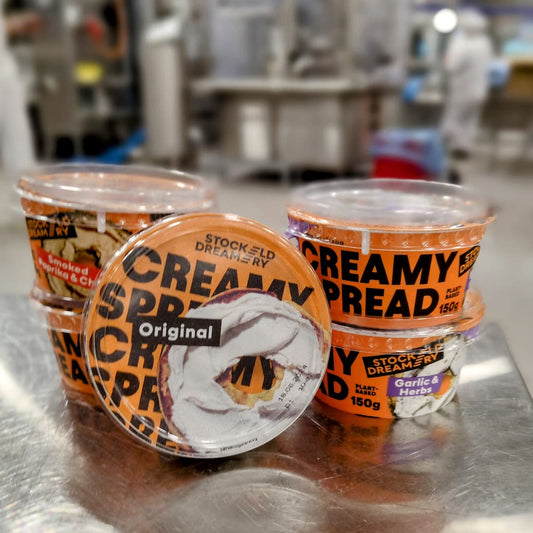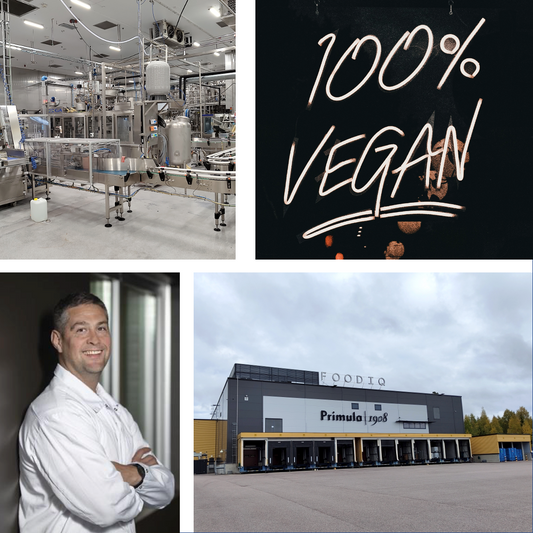

Fava bean makes new food innovations possible
The popularity of the fava bean was declining in Finland until the plant-based food boom of the 2010s made it trendy again. Foodiq’s development work turned the fava bean into Fabea+, the “magic powder”, which surprises with its versatility.


In Finland, the fava bean (Vicia faba ) is an ancient cultivated plant, with references found already in mediaeval texts. It was eaten also by people, for example in soups and porridges, but the bulk of the harvest ended up as animal feed. With other cultivated plants, especially potatoes, becoming more commonplace in the 19th century, fava bean’s popularity began to wane, to the point where the plant was almost completely forgotten. But now the fava bean is making a comeback.
According to the Natural Resources Institute Finland Luke, the field area of fava bean in Finland increased tenfold in the 2010s to more than 22,000 hectares. Part of the fava bean’s new popularity can be explained by farmer subsidies, but the farming of fava beans in particular has been boosted by the continuously growing interest in plant-based food and proteins.
The fava bean has a long growing period – more than 100 days – but because it is very resistant to cold, it can be sown early in the spring without worrying about harm from frosty conditions. One might even say that Finland’s northern climate is very suitable for fava beans. Perhaps by coincidence, the most common fava bean variety in Finland is called Kontu, an archaic word meaning home, house or the area of the home.
For the farmer, the fava bean is also an ecological choice, as the Rhizobium leguminosarum bacterium lives in its roots, symbiotically enabling the plant to bind nitrogen from the air. With this biological nitrogen binding, the fava bean does not need very diligent fertilising, making its cultivation more ecologically sustainable. Growing fava beans is also good for the soil.
According to the Natural Resources Institute Finland Luke, the field area of fava bean in Finland increased tenfold in the 2010s to more than 22,000 hectares. Part of the fava bean’s new popularity can be explained by farmer subsidies, but the farming of fava beans in particular has been boosted by the continuously growing interest in plant-based food and proteins.
The fava bean has a long growing period – more than 100 days – but because it is very resistant to cold, it can be sown early in the spring without worrying about harm from frosty conditions. One might even say that Finland’s northern climate is very suitable for fava beans. Perhaps by coincidence, the most common fava bean variety in Finland is called Kontu, an archaic word meaning home, house or the area of the home.
For the farmer, the fava bean is also an ecological choice, as the Rhizobium leguminosarum bacterium lives in its roots, symbiotically enabling the plant to bind nitrogen from the air. With this biological nitrogen binding, the fava bean does not need very diligent fertilising, making its cultivation more ecologically sustainable. Growing fava beans is also good for the soil.
With respect to its nutritional values, the fava bean is substantial food.
A third of the total energy in fava beans is protein. In addition, fava beans contain fibre, which improves the well-being of the stomach, and folate, which is part of the B vitamins and something that Finns in particular tend to get too little of. In addition, broad beans contain other B vitamins and minerals as well as polyphenols – or antioxidants – which the body’s immune system needs in order to work.
In short, the fava bean is a crop suitable for the Nordic climate, requires little fertilising and is good for the soil. It is also excellent food in terms of its nutritional value. The question arises why the fava bean was forgotten for such a long time, and why it is not cultivated more these days.
For us at Foodiq, the fava bean means an opportunity, and that opportunity is called Fabea+.
Fabea+ is a fermented fava bean raw material developed by Foodiq, available as a powder and in piece, sheet and grit form. It is an excellent basis for various plant protein innovations and is well suited for puddings and gluten-free baking, for example. Fabea+ is high in protein and fibre, and it is also low-fat, gluten-free and GMO-free. Thanks to our in-house production process and fermentation, Fabea+ is also suitable for people with sensitive stomachs.
Fabea+’s biggest advantage for the food industry is its lack of taste, enabling a wide range of applications. We like to think of Fabea+ as a kind of plant protein innovator’s deputy that gives a product a solid backbone but does not want the attention to itself. Regardless of their format, products made from Fabea+ are tasty, healthy, safe and local.
Fabea+ is available in a limited quantity, so if you are interested in co-operation, visit the Fabea website and contact our sales team.
In short, the fava bean is a crop suitable for the Nordic climate, requires little fertilising and is good for the soil. It is also excellent food in terms of its nutritional value. The question arises why the fava bean was forgotten for such a long time, and why it is not cultivated more these days.
For us at Foodiq, the fava bean means an opportunity, and that opportunity is called Fabea+.
Fabea+ is a fermented fava bean raw material developed by Foodiq, available as a powder and in piece, sheet and grit form. It is an excellent basis for various plant protein innovations and is well suited for puddings and gluten-free baking, for example. Fabea+ is high in protein and fibre, and it is also low-fat, gluten-free and GMO-free. Thanks to our in-house production process and fermentation, Fabea+ is also suitable for people with sensitive stomachs.
Fabea+’s biggest advantage for the food industry is its lack of taste, enabling a wide range of applications. We like to think of Fabea+ as a kind of plant protein innovator’s deputy that gives a product a solid backbone but does not want the attention to itself. Regardless of their format, products made from Fabea+ are tasty, healthy, safe and local.
Fabea+ is available in a limited quantity, so if you are interested in co-operation, visit the Fabea website and contact our sales team.





